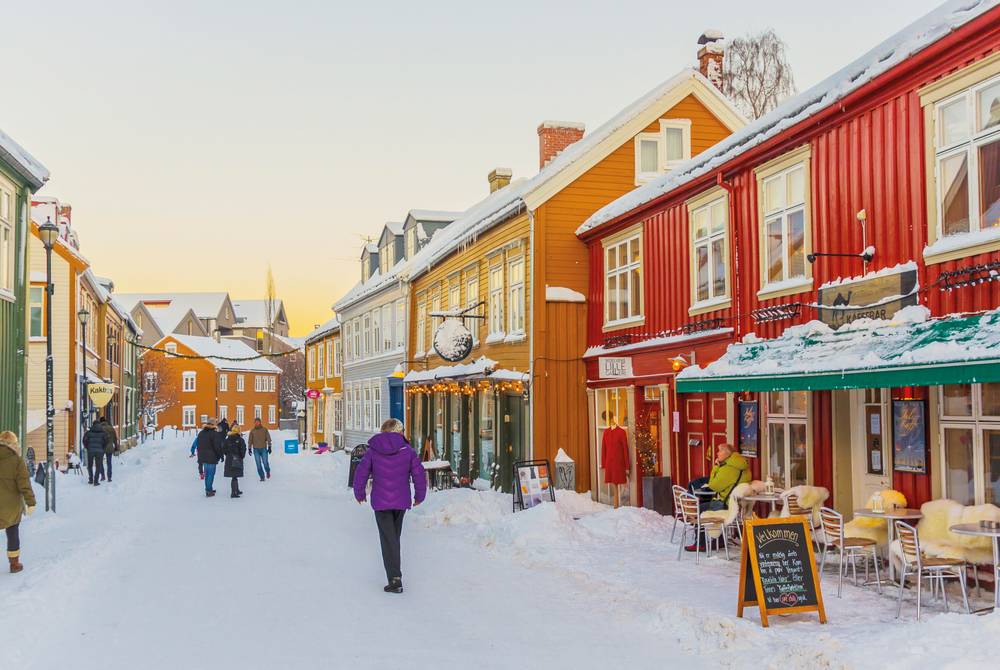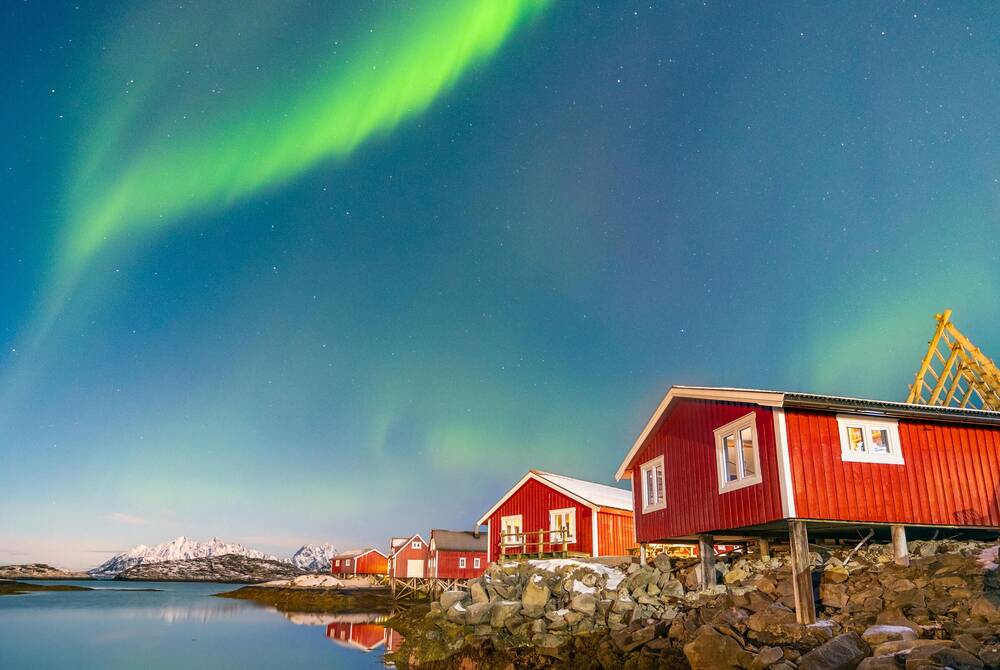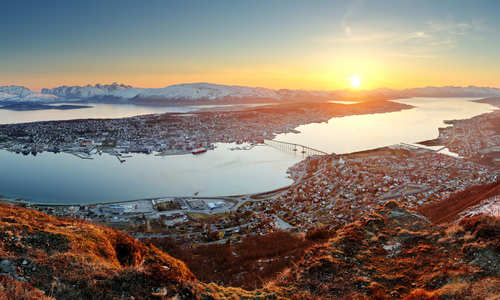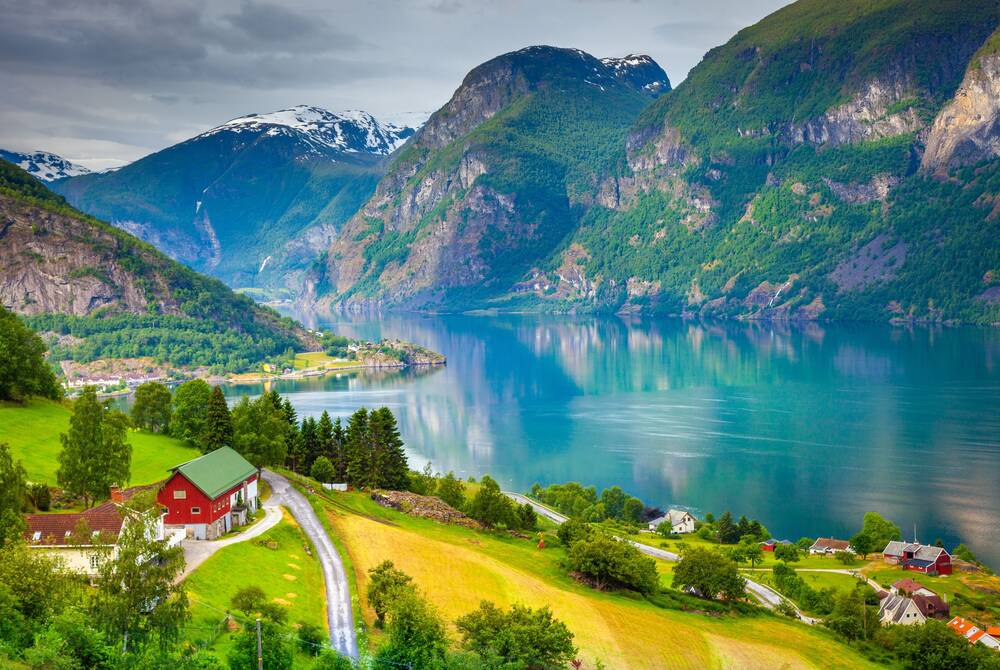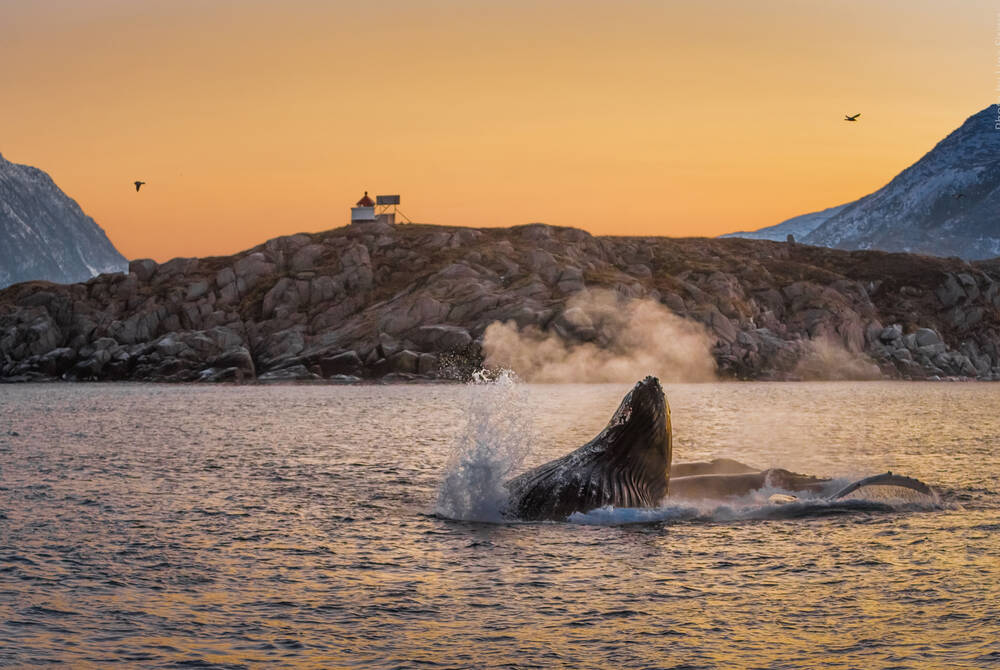Norway is a remarkably versatile year-round travel destination, brimming with awe-inspiring landscapes and opportunities for outdoor adventures, alongside picturesque towns and cities harbouring cultural attractions and colourful architecture in abundance. Choosing the best time to visit depends on what kind of trip you’re planning and which part of the country you’re looking at. Here’s an overview of what you can expect in Norway throughout the seasons.
Summer in Norway
Ideal for: Exploring the fjords, road trips, experiencing the Midnight Sun
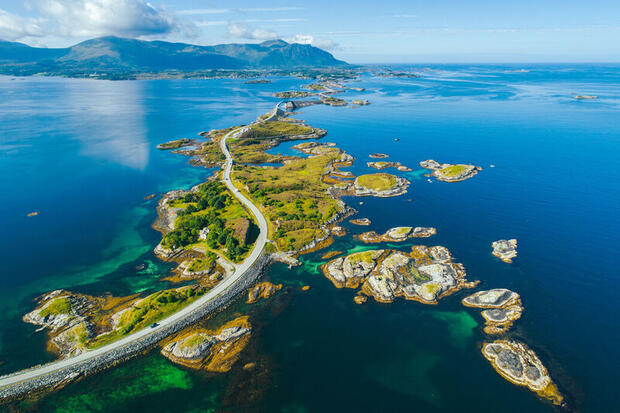
Atlantic Ocean Road, Western Norway
Across much of Norway, summer is the peak travel season – particularly on the west coast, where many of the most spectacular fjords are found, and in the Lofoten Islands, a majestic, mountainous archipelago inside the Arctic Circle. On the mainland, the sun doesn’t set in the far north for more than two months between mid-May and late-July, and even in the south of the country, it doesn’t ever get fully dark throughout the summer months. In Svalbard, meanwhile, the Midnight Sun reigns supreme between 20 April – 20 August.
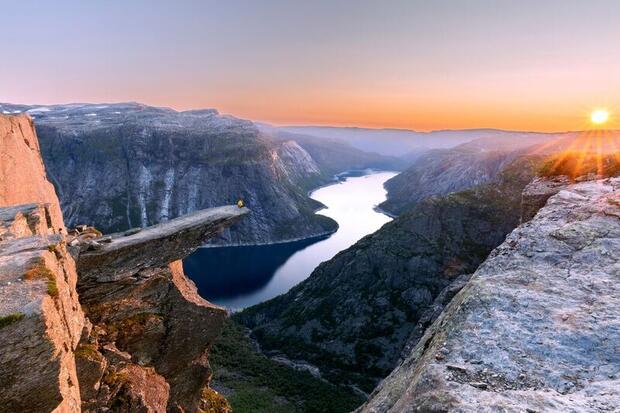
Trolltunga
Summer temperatures in Norway often reach the high teens or early 20s, and sometimes higher during particularly warm spells. With conditions at their mildest and the days at their longest, this is prime time to put friluftsliv into practice – the Norwegian philosophy of spending time in the great outdoors for mental and physical wellbeing, which can take the form of activities such as hiking, cycling, kayaking and swimming. If you’re planning to drive, summer also tends to provide the most favourable road conditions.
Unsurprisingly, summer is when many of the most popular destinations in Norway are at their most crowded – but in a country blessed with seemingly endless swathes of natural beauty, you'll never have to venture far to find yourself in a peaceful and secluded spot.
Recommended summer trips:
- Highlights of Norway: Oslo, Bergen & the Flåm Railway
- Hardangerfjord in a Nutshell
- Geirangerfjord in a Nutshell
- Havila Voyages: Norway Summer Cruise from Kirkenes to Bergen
- Arctic Summer Route: Tromso to the Lofoten Islands
Autumn in Norway
Ideal for: Northern Lights, spectacular colours, avoiding the crowds
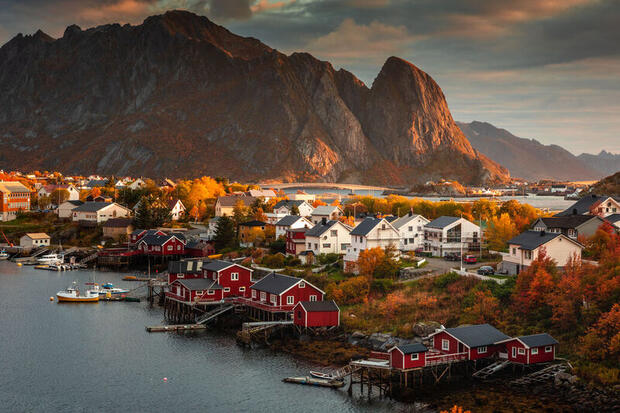
Autumn in Reine, Lofoten Islands
As visitor numbers tend to dwindle and the days grow shorter, autumn brings a vibrant colour palette of gold, amber and copper to landscapes across Norway. From the second half of August, the skies in the north of the country gradually become dark enough for the Northern Lights to become visible once more, and by the middle of September, aurora hunting season is in full swing. As temperatures are still relatively comfortable compared to winter, it’s easier to stay out longer at night in search of the Northern Lights in autumn, and as the lakes aren’t yet frozen, there’s the possibility to see some scintillating auroral displays reflecting on the water.
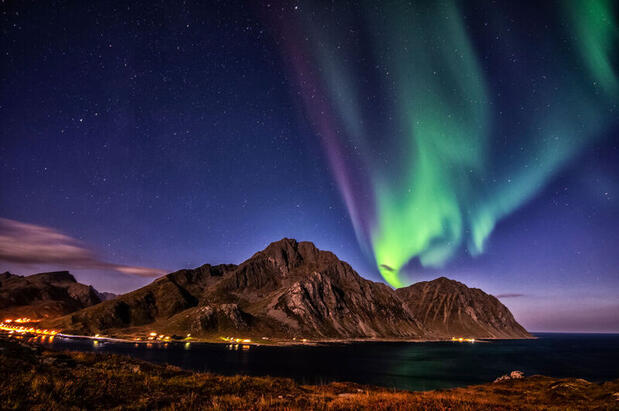
Autumn auroras in Arctic Norway
Weather conditions can be rather unpredictable at this time of year, with snowfall possible even as early as September, especially in the northern regions and in mountainous parts of the country’s interior. Sometimes, snow might not fall until late October or even November, and it’s common for it to quickly melt away again throughout autumn, as temperatures don’t usually stay below freezing long enough for long-lasting snow cover. Hiking is still very much feasible, though if this is a priority, it’s best to aim for September or early October, which offer more daylight and a lower risk of snow and ice.
As such, it’s important to pack for all possibilities when visiting Norway in autumn, and to take extra care when driving, as conditions can change rapidly. As autumn tends to be a significantly quieter period for tourism, it’s often a more affordable time of year to visit Norway.
Recommended autumn trips:
- Autumn in Northern Norway: Tromso and the Lofoten Islands
- Autumn Auroras at Arctic Wilderness Lodge
- Havila Voyages: Coastal Highlights from Trondheim to Tromso
Winter in Norway
Ideal for: Husky sledding, snowmobiling, whale watching, Northern Lights
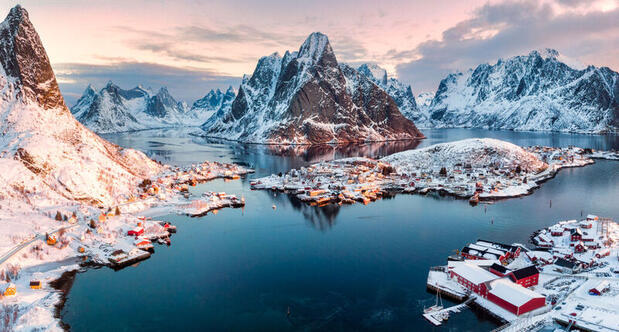
Winter in the Lofoten Islands
A winter trip to Norway offers the chance to embark on all kinds of extraordinary adventures, particularly in places north of the Arctic Circle such as Tromsø and Alta, where you can experience the likes of husky sledding, snowmobiling, ice fishing and snowshoeing. From late-November to mid-January, the likes of Tromsø and Alta are plunged into Polar Night, as the sun doesn’t rise above the horizon. The same applies in the Lofoten Islands, but for a slightly shorter duration, as the archipelago lies a little further to the south. It’s not pitch black throughout this period, though, as there’s a soft, pastel-hued twilight for several hours in the middle of the day.
Polar night is more extreme in Svalbard, which lies roughly halfway between the northernmost tip of mainland Norway and the North Pole. Here, the sun doesn’t rise for over 100 days between late-October and mid-February, and there is virtually no daylight at all from mid-November to mid-January. This is no reason not to visit, though; there’s something uniquely captivating about experiencing Polar Night in the High Arctic, and seeing how locals adapt to live with these seasonal extremes.
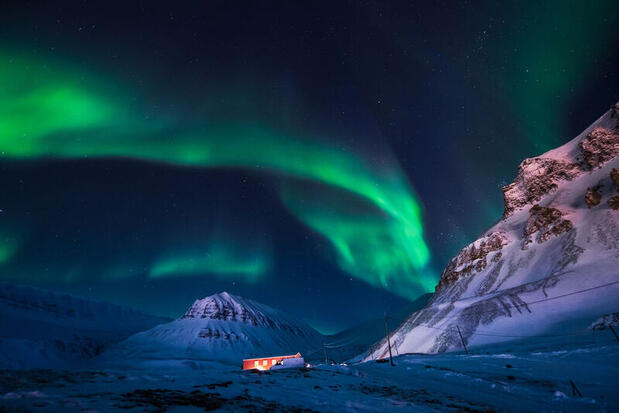
Svalbard during Polar Night
Although snow and ice are widespread, many parts of Norway aren’t as brutally cold in winter as you might assume. This is heavily influenced by the Gulf Stream – a warm, Atlantic Ocean current that extends to the Norwegian Sea, keeping many places along the coast surprisingly mild given their northerly latitude. For this reason, a typical winter’s day in Tromsø, which lies 350 kilometres inside the Arctic Circle, might see temperatures in the range of -5°C – 0°C. Temperatures can, of course, dip to much colder extremes than this, so it’s imperative to pack suitable clothing and footwear for a winter trip to Norway.
In Northern Norway, early November to late January is considered the optimum time to embark on a whale watching safari, with excellent chances of spotting humpbacks and orcas.
Recommended winter trips:
- Tromso & Malangen Resort
- Northern Lights City Break in Alta
- Polar Night in Svalbard
- Northern Lights Cruise & Snowhotel Kirkenes
- Havila Voyages: Norway Winter Explorer from Bergen to Kirkenes
Spring in Norway
Best for: City breaks, coastal cruises, majestic waterfalls, bird watching
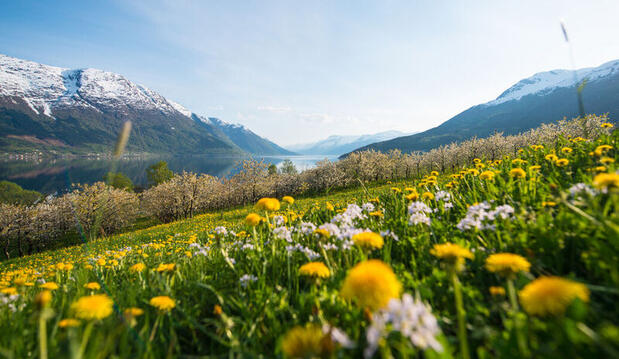
Spring in Hardangerfjord
Spring is a time of stark transformation in Norway, offering a wide range of possibilities for different kinds of travel. In the north of the country, March is a fantastic time to enjoy snow-based activities, with longer daylight hours and generally milder temperatures than in winter. It’s also still possible to see the Northern Lights all the way through to the first half of April, while the period around the spring equinox is often associated with elevated levels of solar activity.
In Svalbard, the Northern Lights season ends earlier, as the nights are already too bright by the second half of March and the Midnight Sun makes its return in April. This period, known as ‘sunny winter’, when the landscapes are still thickly blanketed in snow, is one of the most popular times to visit Svalbard.
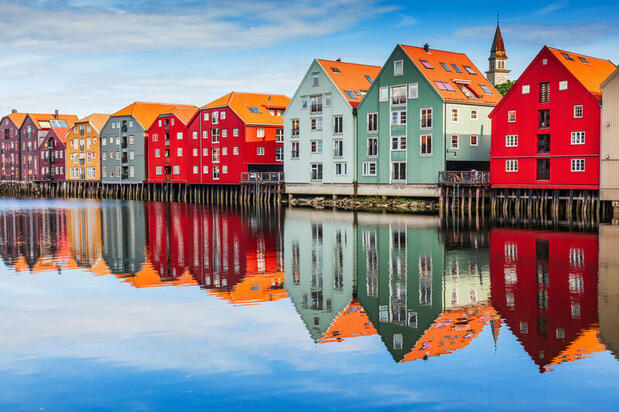
Trondheim
Back on the mainland, towards the end of April and moving into May, snow gradually melts away and the landscapes burst into life, opening up hiking trails which are inaccessible throughout the winter months. Along the banks of the fjords, fruit trees are in full bloom and waterfalls roar into life due to the snowmelt in the mountains. In the Arctic, migratory birds such as puffins, eider ducks and Arctic terns return to nest and breed. Spring is therefore a wonderful time to embark on a Norwegian coastal cruise.
Spring is also a perfect time of year for a Norwegian city break, as cafes, bars and restaurants open up their outdoor terraces and the first farmers’ markets of the year take place up and down the country. This is also when locals enjoy the first utepils, a cold beer enjoyed outdoors in the spring sunshine after a long winter.
Recommended itineraries:







